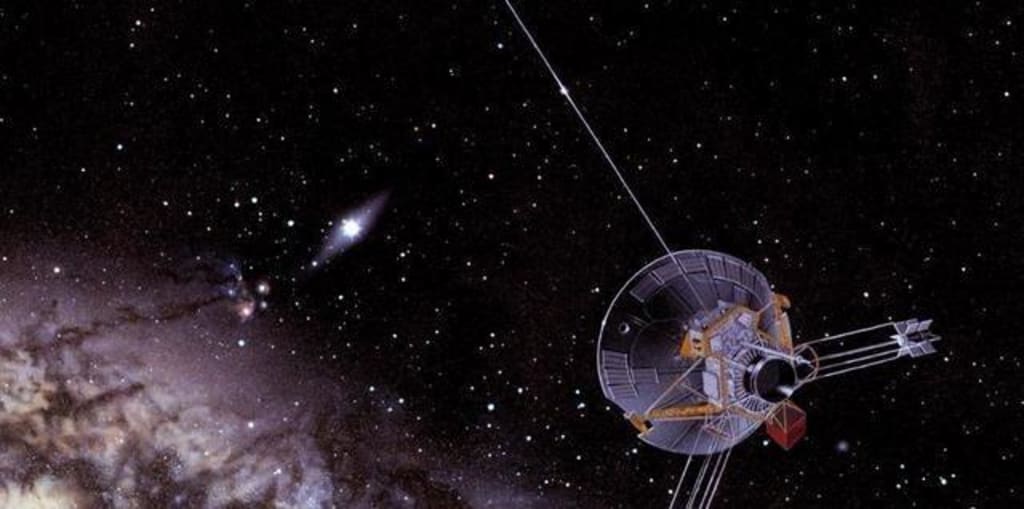Under the framework of general relativity, warp space travel becomes real, how far is it from us?
Under the framework of general relativity, space travel at warp speed becomes real

With the development of science and technology, the depth and breadth of human exploration of the universe has become larger and larger. The universe hundreds of millions of billions or even tens of billions of light-years away, with extremely weak information, shows us mysterious and mysterious complex world. However, the problem of the scale of the universe has always been a bottleneck restricting direct human detection. The distant universes we see through space telescopes are actually their historical images, unless we can observe them up close.
Different scenarios for high-speed space travel
It is a pity that the farthest probe launched by human beings has been flying for more than 40 years, and it is still wandering in the outer reaches of the solar system. It will take at least several thousand years before it will actually go out of the solar system. Just get to the moon. If we want to conduct more intuitive and efficient detection, or if we want to travel to space in the true sense, we must achieve a breakthrough in speed, or use other methods to indirectly increase our speed.
For example, the closest star system to our solar system is Proxima Centauri, which is about 4.25 light-years (40 trillion kilometers) away. And our current fastest human probe is the Parker Solar Probe, and its flight speed is only 600,000 kilometers per hour. This speed is undoubtedly very fast from the earth. It takes at most half a minute to travel from Beijing to Haikou. However, It would take 6,600 years to reach Proxima Centauri at this speed.
Therefore, in order to achieve rapid human travel between galaxies, there are basically two solutions. One is to directly increase the speed, and it must exceed the speed of light. Another solution is to fold the space around the aircraft, thereby indirectly shortening the distance between the "departure point" and the "destination" and shortening the travel time in disguise.
Both scenarios are mentioned in many science fiction novels, such as in Isaac Asimov's "Basics" series, where humans drive jump drives to travel faster than the speed of light. In "Interstellar", wormhole technology is used to connect black holes and white holes to achieve short-term space transfer. In "Star Trek", humans use warp engine technology, wrapping the spacecraft with space warp bubbles, so as to use the principle that space changes can break through the speed of light to achieve high-speed travel. In "Three-Body Problem", humans drive a spaceship with curvature, there is no space bubble wrapping, the space is not flat, and the maximum speed can only be close to the speed of light, so there is a relativistic effect.
warp engine technology
At present, physicists' understanding of time and space comes from Einstein's general theory of relativity. General relativity combines time and space with a high degree of unity, arguing that no matter what the circumstances, no object can move faster than the speed of light. At the same time, general relativity also describes the mass and energy of objects. If they affect time and space, the greater the mass of the object, the more energy it carries, which will distort the surrounding time and space, whether it is The earth is still the sun, and due to their gravitational effects, the surrounding light will be deflected to varying degrees.
In particular, a special solution to the gravitational field equations of general relativity is a black hole, which possesses an enormous gravitational force, and any object that falls into its event horizon will be pulled mercilessly and finally crushed into subatomic or other unknown particles form. Objects near the event horizon of a black hole will be affected by very strong space-time distortions, that is, they are always in a gravitational potential well. Some scientists and science fiction writers, influenced by general relativity, see this very powerful warping of spacetime as an ultimate solution to jumping the speed limit. The warp engine technology has thus shown its prototype.
In 1994, Mexican theoretical physicist Miguel Acubiere proposed that if humans create a spaceship, and this spaceship has the ability to highly compress the space-time in the front, and the space-time in the back can be highly expanded, then in When there is a significant difference in the space-time gravitational fields at the front and rear ends, it is possible to push the spacecraft to travel at a speed exceeding the speed of light. Miguel Alcubiere, through mathematical modeling, speculated that the above assumptions are in line with general relativity. Because of the warp engine technology, the distance between the two points A and B in the spacecraft is compressed through the effect of technology, which reduces the time required for the spacecraft to pass through the two points A and B in a disguised form. Judging from the surrounding space, the speed of the spacecraft has not accelerated.
negative energy problem
Miguel Alcubiere also proposed the key to realize the technology of warp speed engine, that is, to create a space-time bubble around the spacecraft, and to achieve the curvature of space-time through the space-time bubble, so as to achieve the purpose of shortening the space distance. The realization of the warp engine technology must ensure that the surrounding space is always flat, and it is not the spaceship itself that moves, but the space itself, so the spaceship will not have changes in acceleration. It is precisely because space is moving that there is no limit to the speed of light, even if it exceeds the speed of light, it does not violate the theory of relativity.
However, to drive the generation of such space-time bubbles, it is necessary to use negative energy to generate the negative curvature of space-time. At the operational level, it can be achieved by a large amount of negative mass, or by constructing a negative energy density ring. Judging from the current situation in the scientific community, the realization of negative mass is too difficult, and it is only a theoretical type of matter, so the application of negative energy may be the only option.
In order to generate negative energy, the warp drive must require a huge amount of mass to create particles and antiparticles, and create an imbalance between them, thereby creating a negative energy density that drives the space around the spacecraft to move. However, in order to realize the effective space movement of the warp engine, there must be enough negative energy, which means that a large amount of material input is required. Alcubiere predicts that if a warp drive can be created, and the negative energy bubble around it is 100 meters in diameter, the required material input will reach the mass of the entire visible universe.
In 1999, another physicist, Chris van den Blok, based on the above, further proved that if the internal volume of the negative energy bubble remains unchanged, if the surface area does not change all the time, Then the demand for energy input will be greatly reduced. The final inferred result is that the mass input required for a negative energy bubble with a diameter of 100 meters is at least the mass of the entire solar system. Although the total input is much reduced, it is still far far beyond what is possible in practice.
Of course, the above speculations about the warp engine are all calculated based on mathematical models. At the same time, the current scientific field is still in the stage of theoretical exploration for negative energy, so the warp engine is currently only a guess, there is no corresponding experimental evidence, and there is still a long way to go before implementation. However, a lot of the development of science is not based on conjectures?
About the Creator
dardani lennon
The question mark is the key to any science
Enjoyed the story? Support the Creator.
Subscribe for free to receive all their stories in your feed. You could also pledge your support or give them a one-off tip, letting them know you appreciate their work.






Comments
There are no comments for this story
Be the first to respond and start the conversation.